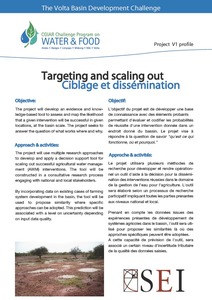West african agriculture and climate change: A comprehensive analysis
Agriculture is vital to livelihoods in West Africa. It is the main source of employment for the 290 million people who live in the region, employing 60 percent of the workforce, and accounts for 35 percent of the region’s gross domestic product (GDP). This crucial economic activity is endangered by climate change. How to foster agricultural development and food security in West Africa despite the effects of climate change and other challenges is the subject of the study West African Agriculture and Climate Change: A Comprehensive Analysis.
Southern african agriculture and climate change: A comprehensive analysis
Southern African Agriculture and Climate Change: A Comprehensive Analysis examines the food security threats facing eight of the countries that make up southern Africa — Botswana, Lesotho, Malawi, Mozambique, South Africa, Swaziland, Zambia, and Zimbabwe — and explores how climate change will increase the efforts needed to achieve sustainable food security throughout the region. Southern Africa’s population is expected to grow at least through mid-century. The region will also see income growth.
Overview [in Southern African Agriculture and Climate Change]
Book chapter
The child health implications of privatizing Africa’s urban water supply
Can private-sector participation (PSP) in the urban piped water sector improve child
health? The author uses child-level data from 39 African countries during 1986–2010 to show that
introducing PSP decreases diarrhea among urban dwelling children under five years of age by 5.6
percentage points, or 35 percent of its mean prevalence.
Targeting and Scaling Out
The project will develop an evidence and know- ledge-based tool to assess and map the likelihood that a given intervention will be successful in given locations, at the basin scale. The project seeks to answer the question of what works where and why




